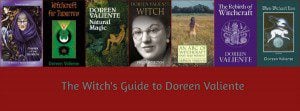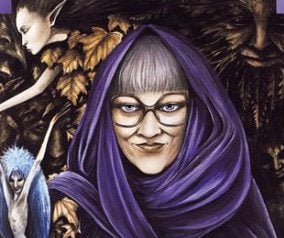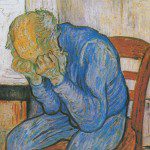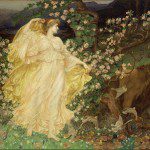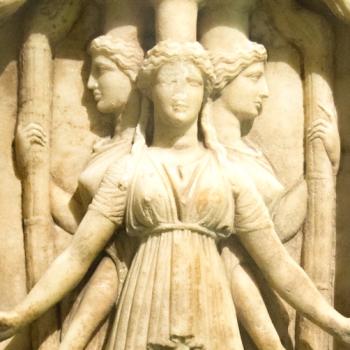For many people Doreen Valiente (1922-1999) is the Mother of Modern Witchcraft, and that’s not a title I’d argue with. Recently a friend of mine wrote something online about not really being familiar with the work of Doreen Valiente. After laughing a drink of coffee up through my nose I told my friend that of course she was at least a little familiar with Valiente’s work, because she was! Almost anyone who had adopted the word Witch as their own over the last fifty years has been influenced by Valiente, and that influence will continue into the far future.
Valiente’s legacy as a book author is small (she only authored five books during her lifetime), but Valiente’s contribution goes far beyond books. I’d argue that she’s Witchcraft’s chief liturgist and that her traditionally published works are only a very small part of her legacy. Valiente’s true genius was as a poet and a ritual architect. Nearly every ritual I’ve been associated with over the last twenty years has had a bit of Valiente in it.
THE ESSENTIALS-RITUAL WORKS
Valiente’s most well known contribution to the Modern Craft is her Charge of the Goddess, which is about as close to official liturgy as Wiccan-Witchcraft gets. Valiente’s Charge contains bits and pieces from previously published works, but that takes nothing away from the work. It’s how Valiente assembled those pieces that give her Charge its weight and heft. I’ve written at length before about the history of the Charge (and its many versions) but it’s Valiente’s version that resonates the most with me, and judging by its popularity, most other Witches.
If Valiente had only written her Charge of the Goddess I think she’s someone we would still be talking about, but that’s just the beginning of her contributions to ritual. For many Witches raising the cone of power coincides with reciting Valiente’s Witch’s Rune (Darksome night and shining moon, East and South, West and North, Hearken to the Witches’ Rune, For here I come to call thee forth),* which was designed as a chant to raise energy. In my own coven when I’ve got nothing planned for ritual I simply start up Rune knowing that it’s really all we need to do to create a meaningful ritual. (One small caveat though, as much as I love Valiente I feel the need to point out that word and sword just do not rhyme, regardless of accent.)
Beyond the Charge, my favorite piece of Valiente poetry is The Witch’s Ballad (Oh, I have been beyond the town, Where nightshade black and mandrake grow, And I have heard and I have seen, What righteous folk would fear to know!), a piece I use myself with some frequency in circle. Often overlooked as a tour de force of Wiccan spirituality is Valiente’s The Witches’ Creed. It’s a poem that lives up to its title, encapsulating the spirit and traditions of Modern Witchcraft. It’s a little too long for chanting in the circle, but works well in initiation and dedication rituals.
Valiente also wrote a lot of seasonal poetry, with chants for Samhain, Yule, and Beltane being especially great. While known for the Charge of the Goddess, Valiente also created some wonderful material dealing with the Horned God. Not surprisingly she composed a Charge of the God (similar to her Goddess charge in structure and cadence), but that’s just the beginning. Valiente’s poetry is about Witch-experience of all kinds.
THE ESSENTIALS-VALIENTE’S PUBLISHED WORKS
Valiente released five books during her lifetime, and after her passing the Centre For Pagan Studies released a collection of her poetry entitled Charge of the Goddess, initially in 2000, with an expanded version in 2014. It’s a slim volume, but an essential one, with reminisces from contemporaries of Valiente along with her poetry. Many of her poems are in their original “typed out by Doreen” state, including the notes in the margins. This is one of my favorite things about the Charge book and is a nice personal touch.
Valiente’s most prolific period as an author was during the 1970’s when she released three books. The first of those was 1973’s An ABC of Witchcraft, which lives up to its title. Instead of a straight forward Witchcraft 101 book, ABC is a series of short entries on various things associated with and linked to Witchcraft. I find it to be more than a little dated in 2016, but it’s still an impressive volume, even more so because several other titles in a similar vein have appeared in the years since. Not surprisingly, Valiente was first.
Valiente’s next two books were her most essential “how to” volumes. The first, Natural Magic (1975) is not a Witchcraft book, but a more general introduction to various forms of magic and spellwork. It’s short on tools and long on practical information. Again, Valiente was decades ahead of the curve on this type of volume.
Witchcraft For Tomorrow (1978) is probably Doreen’s most loved book, and is her contribution to “Wicca 101” studies. What makes the book truly exceptional is that it provides a first-class look into just how Valiente saw the Craft and conducted her rites and workings. This isn’t Gardnerian Craft or Cochrane’s Clan of Tubal Cain, this is Valiente’s synthesis of those influences along with her own ways of doing things. I often think of 1979 as the year the 101 book came of age (that’s the year The Spiral Dance was released), but Tomorrow is just as informative, if not quite as transformative.
Witchcraft For Tomorrow also contains a small “Book of Shadows” towards the end of the work. This is substantial because of just how few examples of ritual were then in print. Rituals had been available since 1971 or so, but until Valiente they often lacked any context. The works of Lady Sheba for example are just a plagiarized BoS (featuring some of Valinete’s work!) lacking any sort of explanation as to its contents. Valiente provided both ritual and information in one neat little package.
My favorite Valiente book is The Rebirth of Witchcraft (1989) which is in many ways Doreen’s memoir. As someone who had the catbird’s seat for the first thirty years of the Wiccan-Witchcraft/Pagan revival Valiente’s book isn’t just an entry way into her insights, but an up close look at folks like Gerald Gardner, Robert Cochrane, and Patricia Crowther. This is a must-have for anyone interested in the history of Modern Witchcraft. There are a few chapters that I think drift off into a bit of silliness, but the highlights far outnumber such moments.
(Not making this section Valiente’s first book, Where Witchcraft Lives (1962). It’s an interesting little volume, but is only concerned with Witchcraft in a small part of England. The latest edition includes an introduction by Ronald Hutton.)

VALIENTE BIOGRAPHIES
When a writer like Doreen Valiente documents much of her own life story (as she did in The Rebirth of Witchcraft), it tends to make any other sort of biography redundant, that’s not quite the case with Philip Heselton’s Doreen Valiente: Witch (2016). After reading Witch it occurred to me just how much of Doreen’s own story she didn’t document in Rebirth. Her memoir has a lot of information about other people in it, and their practices, but perhaps she was hesitant to truly write about herself? Witch was an eye-opening revelation and I left it with a better understanding of Valiente as a person.
Was she quirky? You better believe it, but she was also brilliant, and had a life far more interesting than she let on during her lifetime. Am I overjoyed to know that Valiente was a major fan of World Cup Soccer? Yes, and now when people complain about me postponing sabbat rituals for soccer/football I’ll tell that Valiente would have done the same thing. Heselton presents a great picture of a fascinating and complicated lady, and my esteem for Valiente only increased after reading his book.
Witch isn’t the only Valiente biography available, though it is the best. Published a few years earlier was Ameth: The Life and Times of Doreen Valiente (2013) by Jonathan Tapsell. Ameth (Valiente’s magical name) reads more like a quick sketch of her life and lacks the depth of Heselton’s work. It’s not awful, it’s just not as good as the alternative.
VALIENTE IN OTHER WORKS
There are two other books worth mentioning when it comes to Valiente, and one of them is probably already on your bookshelf. Janet and Stewart Farrar’s Eight Sabbats For Witches (1981) and The Witches’ Way (1984), published together as The Witches’ Bible, contain a great deal of ritual material originally written by Valiente during her time with Gerald Gardner in the 1950’s. As she was an active part of assembling and editing both books, the parts she did write meet her standards, and aren’t the bastardized versions seen in other places.
Other Profiles in Witchery & Magick
Aleister Crowley
Gerald Gardner
Robert Cochrane
Dion Fortune
The Witches’ Way also includes a closing essay written by Valiente that proves the existence of “Old” Dorothy Clutterbuck in England’s New Forest area. Clutterbuck was alleged to be one of the Witches in the original New Forest Coven that initiated Gerald Gardner and Valiente’s detective work was the first work by a Witch to document her.
While Valiente is often associated with Gardnerian Witchcraft, she was also a part of Robert Cochrane’s Clan of Tubal Cain, and while reading The Rebirth of Witchcraft I’ve always gotten the impression it might have been her favorite version of the Craft. Though she didn’t write Witchcraft: A Tradition Renewed (1990), Valiente did provide a forward and a bit of an endorsement to this gem of a book by the late Evan John Jones. Renewed is about as close as we are ever going to get to the original spirit of Cochrane’s Craft. If it was good enough for Valiente, it’s good enough for you or I.
SUPER ADVANCED STUDIES
If you were lucky (and smart) enough to read this post within a few months of its original publication date there’s probably still time to catch the Doreen Valiente Exhibition: Where Witchcraft Lives at Preston Manor in Brighton England. The exhibition opened in April of 2016 and runs through September 2016. While you are in Brighton catching the exhibit make sure to stop and see her Blue Plaque near her old residence. I’ll be visiting this September!
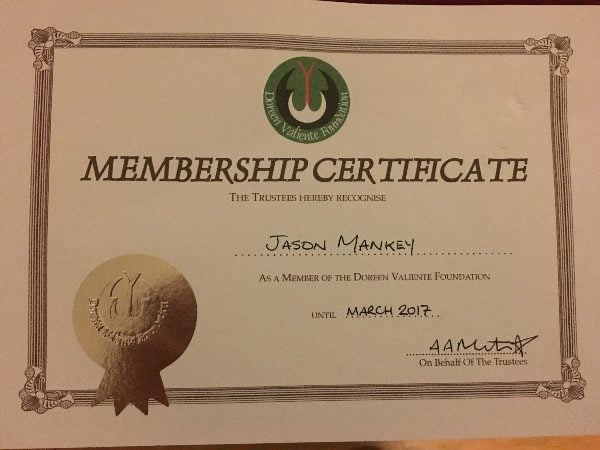
MAKE SURE TO READ . . . .
The Charge of the Goddess (book) Buying Charge helps the Centre for Pagan Studies continue its mission, and mount exhibitions like the one in Brighton. You can also become a member for about fifty bucks. Totally worth it. If you don’t want to buy the book, just read all the poetry, and then use it.
The Rebirth of Witchcraft One of the five most important books on the rebirth of the Craft.
Witchcraft For Tomorrow It’s what Doreen did!
Doreen Valiente: Witch Early editions were published by the Centre For Pagan Studies, in June Llewellyn released a more easily obtainable version. All of Valiente’s books are in print! That doesn’t usually happen when I write these types of articles!
Jason Note: I’ve always felt a weird kinship with Doreen Valiente (maybe because we share a birthday?) which is why I refer to her as Doreen in this piece on a few occasions. Through her books I’ve lived in her world and through her poetry I feel like we’ve shared ritual space.
*Despite how often they’ve been plagiarized over the years, Valiente’s poems are copyrighted and can be read in their entirety on her website through any internet search engine.


